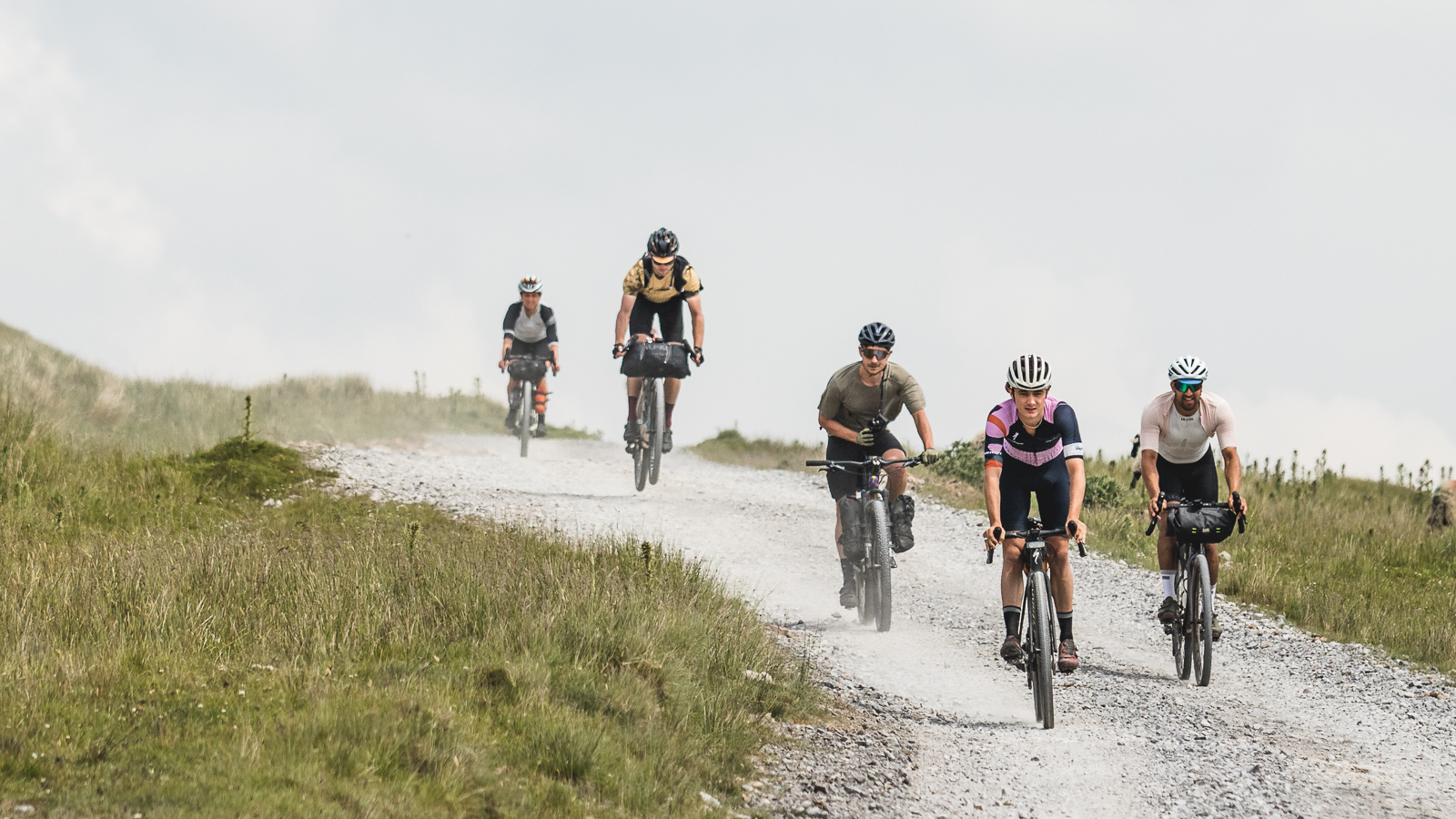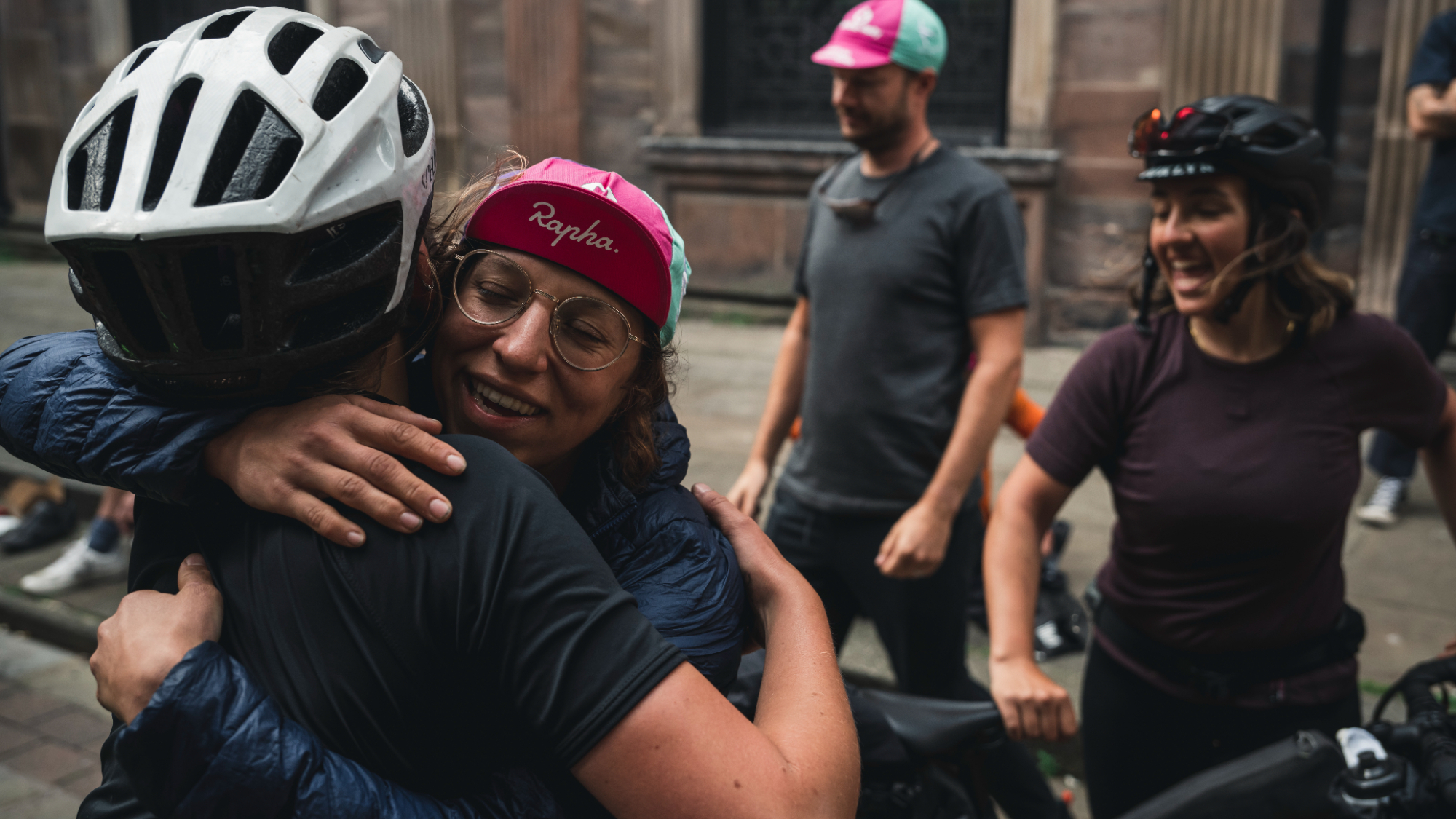Rapha Pennine Rally – everything you need to know
The multi-day bikepacking event from Edinburgh to Manchester that’ll have you itching to plan your next bikepacking adventure

The 2023 Rapha Pennine Rally kicks off on June 6th this year, bringing together over 100 riders of all ages and cycling backgrounds to endure whatever mother nature throws their way. With five days adventuring across Britain’s mountainous backbone, riders are expected to be completely self-sufficient, carrying everything they need: food, water, tools, tents and good vibes.
What is the Pennine Rally?
With over 500 km of on- and off-road trails to conquer, over 10,000 meters climbing and only five days to complete it, this event wasn’t designed for the fainthearted. With a real push towards ultra-endurance events nowadays, especially in the gravel scene, it has many newcomers wondering how these athletes start out and build up their bikepacking “resume”? Do these riders just decide one day to go out and attack a 300 km ride in a day or do some simply leave the house to ride two weeks down the length of France – for fun? Well, some people do, but for the majority of athletes, bikepacking and ultra-distance riding is learnt/built up over years of micro adventures. Some would even say back-garden adventuring.
The Rapha Pennine Rally has been created to do exactly this. For some, It is an entry into the bikepacking world and for others, it’s a way to build on their experience and meet other like-minded athletes. With heavy emphasis on the fact it is a rally not a race, riders are encouraged to take their time, enjoy the picturesque scenery and forge lifelong friendships along the way.
However, for those who enjoy more of a mental and physical challenge or are seeking more of an adrenaline filled experience, there is an “express” option where riders set off two days after the main field, to complete the route in only three days. A challenge that only a few riders will embark on, requiring some meticulous route examination and a speedy (ideally lightweight) bike setup. To get an idea of what those setups might be, see our Rapha Pennine Rally bike check from last year's edition. Our findings demonstrated that most riders opt for a gravel bike and load it with variations of bike packing bags; few riders will attack the course on a MTB. Mainly due to the course being 50/50 road/off-road, therefore a MTB might fare too slow on the road sections. However, those MTBers out there will have major advantages in comfort and speed when descending, they’ll be sure to tell you! Our very own Graham Cottingham was the only rally rider to ride a fixed gear bike, completing the route on his custom Surly Steamroller.

So what should riders expect and prepare for?
Starting in Scotland the weather is never a given. The morning could greet you with glorious sunshine but by evening, the changeable ways of the north could mean you are wrapped up in all your layers and hunkered down into a sleeping bag trying to warm up. Obviously weather forecasting nowadays can help with layering decisions, but you can never be too sure throwing a small extra layer in is more likely a help rather than hinder. Some small and effective layers we’ve tried and tested are the Rapha Pro Team Thermal Base Layer and the Albion Zoa Burner scarf. In fact, under the riders entry, they receive a tracker which allows family, friends and the riders themselves, to track where exactly on route they are. On top of this, the software will not only plot the riders, but predict the weather for the coming days at their exact location. Similar to the few ride analysis softwares available today, such as MyWindSock; the GPS tracker Follow My Challenge is equipped with weather predicting technology as well as 3D view, leaderboards, elevation charts, raceflows and more.
Over the five-day expedition, riders who aren’t braving the elements at night will need to plan and book their accommodation into the route. However, many of the riders opt for the wild camping option, allowing them to pitch up wherever they deem appropriate for the night; provided they have provisioned enough fresh water and snacks, this could be anywhere.

Staying fueled is key and definitely something that should be prepared for prior to starting. Riding at least 100km a day for five days straight is hard going on the body and requires an obscene amount of energy to keep the brain thinking straight and legs pedaling efficiently. Staying on top of calorie intake will play a major part on whether riders finish or bail on the challenge. With only three checkpoints/feed zones and very few villages to refuel on route, the riders will need to carry the majority of their food with them. One of the main sponsors, Outdoor Provisions, will be providing their snacks at checkpoints, so riders will be sure to stock up keeping in mind the days of riding ahead.
Finally, not only do the body and mind need to be in good working order but equipment needs to be in check. Ensuring that the bike is running smoothly will pay off but if hit with some unfortunate luck and riders experience mechanicals along the way, they are expected to be able to fix/solve their own problems. Carrying tools is annoying – they aren’t light. However, this is not something I would compromise on, having a spare set of brake pads or two thick inner tubes is much more important than freeing up 500g of weight. Some tools/spares I’d recommend taking are: 2x brake pads, 2x inner tubes, spare tubeless sealant, tubeless plug kit, tire levers, inner tube patches, 2x quick links, multi-tool (with chain breaker), mini pump, gas canister x2, zip ties and a roll of electrical tape (always usefu). Riders may not need all of these and may want more, it’s all personal preference but 100 percent worth considering. The idea of being stuck in the middle of the hills with a blown inner tube and no spares is that of a cyclist's nightmares – always be prepared!

With not long until the rally kicks off, riders should be in preparation and testing mode. I myself will also be attempting the rally this year with a friend of mine. Having never done a bike packing expedition longer than two days, I'm excited to see how I will cope over the five-day journey across the Pennines. I’ll be riding a Canyon Grizl SL 6 (look out for a review soon) and we’ll be battling the elements at night, camping in a small but lightweight tent. Follow me on Instagram @amyperryman_ where I will be posting updates on the rally or dot watch our progress on followmychallenge.com. Wishing all the other riders good luck!

As someone who has grown up immersed in the cycling community, Amy has a deep knowledge of the sport. Based in Portsmouth, she began racing track aged 7 and as her love for it grew, at 21, she now competes to a high level in various disciplines, eg. Cyclocross, Road/crit racing, MTB XC and Gravel, racing the CX season for Montezuma's Race Team and throughout the summer racing for the London-based team TEKKERZ CC. Coming from a very intense racing background, she has newly discovered the gravel and off-road bikepacking scene. Amy would love to travel the world more with her bike, so is keen to dip into this newer side of cycling and see what the hype is about.
Rides: Canyon Ultimate CFR, Specialized Allez Sprint 2022, Ridley X-night SL, Scott Spark RC Team edition
Height: 166cm
Weight: 66kg
